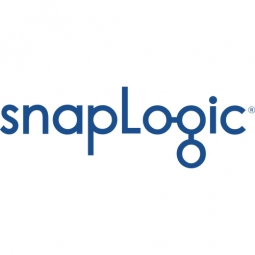公司规模
Large Corporate
地区
- America
国家
- United States
产品
- SnapLogic Enterprise Integration Cloud
- Amazon Redshift
- Amazon EMR
- Amazon Kinesis
- Amazon DynamoDB
技术栈
- Amazon Web Services
- SnapLogic
- Google BigQuery
- MongoDB
- Salesforce.com
实施规模
- Enterprise-wide Deployment
影响指标
- Productivity Improvements
- Customer Satisfaction
- Digital Expertise
技术
- 分析与建模 - 大数据分析
- 平台即服务 (PaaS) - 数据管理平台
- 应用基础设施与中间件 - 数据交换与集成
适用行业
- 教育
适用功能
- 商业运营
- 产品研发
服务
- 云规划/设计/实施服务
- 数据科学服务
- 系统集成
关于客户
Kaplan Test Prep is a well-established company headquartered in New York, NY, with a workforce of 3,000 employees. For nearly a century, Kaplan has been a leader in the education industry, helping millions of students and professionals master the skills necessary for career advancement. The company is renowned for its quality test preparation products and services, covering more than 100 standardized tests. Kaplan is committed to staying at the forefront of digital technology to uncover opportunities and improve the quality of its offerings. By leveraging big data, Kaplan aims to innovate and transform its business, providing students and professionals with the tools they need to succeed in their educational and career pursuits.
挑战
Kaplan Test Prep faced significant challenges due to the accumulation of disparate applications storing data in different formats, which created a technology strain. This situation prevented the company from having a single version of truth or a flexible architecture, making it difficult to gather and harmonize data across all domains. The company had accumulated a large amount of data over the last decade, and early attempts to integrate this data using data virtualization technology and off-the-shelf products were time-consuming and inefficient. Kaplan needed a solution that could streamline data integration and provide insights more quickly to support their business innovation and digital transformation goals.
解决方案
Kaplan sought an integration platform-as-a-service (iPaaS) to streamline data integration and support their big data strategy. They chose SnapLogic's Enterprise Integration Cloud for its flexibility, ease of use, and compliance with security standards. SnapLogic enabled Kaplan to integrate data seamlessly from legacy systems, increasing productivity and enabling more self-service. As a cloud-based company, Kaplan implemented Amazon Web Services as their preferred partner for their big data initiative. With SnapLogic, Kaplan created a data lake within Amazon Redshift and ingested data from various sources, including Amazon Kinesis, S3 buckets, Amazon DynamoDB, and AWS Lambda. This integration allowed Kaplan to create a big data platform using Amazon EMR, empowering data scientists to distill insights and business departments to identify areas for improvement.
运营影响
数量效益

Case Study missing?
Start adding your own!
Register with your work email and create a new case study profile for your business.
相关案例.

Case Study
Revolutionizing Medical Training in India: GSL Smart Lab and the LAP Mentor
The GSL SMART Lab, a collective effort of the GSL College of Medicine and the GSL College of Nursing and Health Science, was facing a challenge in providing superior training to healthcare professionals. As clinical medicine was becoming more focused on patient safety and quality of care, the need for medical simulation to bridge the educational gap between the classroom and the clinical environment was becoming increasingly apparent. Dr. Sandeep Ganni, the director of the GSL SMART Lab, envisioned a world-class surgical and medical training center where physicians and healthcare professionals could learn skills through simulation training. He was looking for different simulators for different specialties to provide both basic and advanced simulation training. For laparoscopic surgery, he was interested in a high fidelity simulator that could provide basic surgical and suturing skills training for international accreditation as well as specific hands-on training in complex laparoscopic procedures for practicing physicians in India.

Case Study
IoT platform Enables Safety Solutions for U.S. School Districts
Designed to alert drivers when schoolchildren are present, especially in low-visibility conditions, school-zone flasher signals are typically updated manually at each school. The switching is based on the school calendar and manually changed when an unexpected early dismissal occurs, as in the case of a weather-event altering the normal schedule. The process to reprogram the flashers requires a significant effort by school district personnel to implement due to the large number of warning flashers installed across an entire school district.

Case Study
Implementing Robotic Surgery Training Simulator for Enhanced Surgical Proficiency
Fundacio Puigvert, a leading European medical center specializing in Urology, Nephrology, and Andrology, faced a significant challenge in training its surgical residents. The institution recognized the need for a more standardized and comprehensive training curriculum, particularly in the area of robotic surgery. The challenge was underscored by two independent studies showing that less than 5% of residents in Italian and German residency programs could perform major or complex procedures by the end of their residency. The institution sought to establish a virtual reality simulation lab that would include endourological, laparoscopic, and robotic platforms. However, they needed a simulator that could replicate both the hardware and software of the robotic Da Vinci console used in the operating room, without being connected to the actual physical console. They also required a system that could provide both basic and advanced simulation training, and a metrics system to assess the proficiency of the trainees before they performed surgical procedures in the operating theater.

Case Study
Edinburgh Napier University streamlines long-distance learning with Cisco WebEX
• Geographically dispersed campus made in-person meetings costly and inconvenient.• Distance-learning programs in Malaysia, India, and China required dependable, user-friendly online tools to maximize interaction in collaborative workspaces.• Virtual learning environment required a separate sign-in process, resulting in a significant administrative burden for IT staff and limited adoption of collaboration technology.

Case Study
8x increased productivity with VKS
Before VKS, a teacher would spend a lot of time showing a group of 22 students how to build a set of stairs within a semester of 120 hours. Along with not leaving the teacher much time to provide one-on-one support for each student to properly learn carpentry, it also left a considerable amount of room for error. Key information would be misinterpreted or lost as the class was taught in the typical show-and-tell way.

Case Study
Scalable IoT Empowering GreenFlex's Sustainable Growth
GreenFlex, a company that supports sustainable development, decarbonization, and energy efficiency, faced several challenges in its quest to expand its business. The company needed to deploy a robust and sustainable IoT technology to support its growth. It was crucial for them to monitor and control devices at customer sites in a safe and reliable manner. They also needed to integrate devices across a range of communication protocols and gather and act on data to meet efficiency targets. GreenFlex had previously built IoT capabilities into its digital platform, GreenFlexIQ, to monitor and manage customer sites remotely. However, they soon realized that they needed a new platform to support their ambitions. They needed a platform that could scale to connect more devices for production management and make it easier for the operations team to manage devices in the field.







